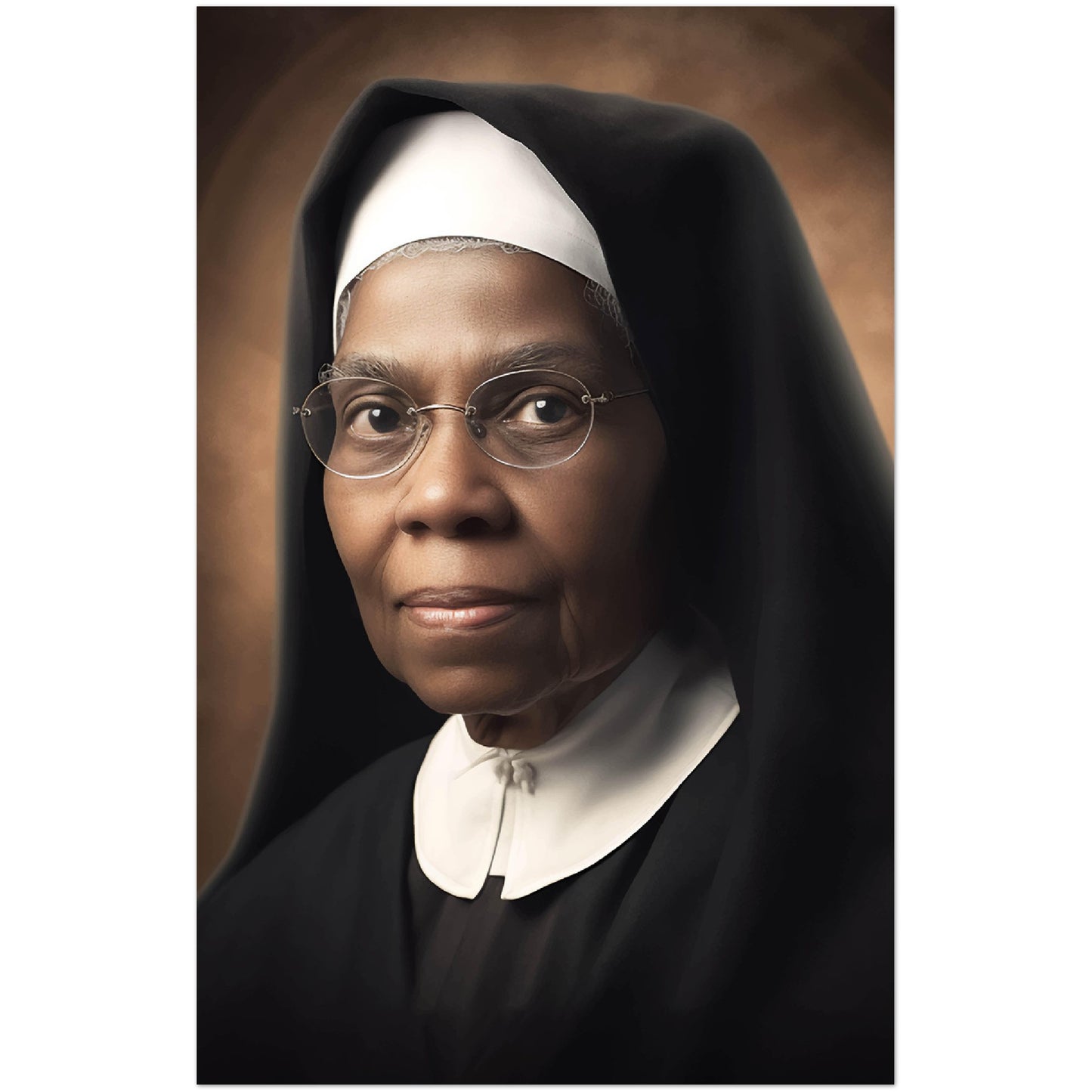1
/
of
2
Rosary Team
Sister Wilhelmina Lancaster of the Most Holy Rosary Silk Paper Print 10 copies
Sister Wilhelmina Lancaster of the Most Holy Rosary Silk Paper Print 10 copies
Regular price
$34.96 USD
Regular price
Sale price
$34.96 USD
Unit price
/
per
Shipping calculated at checkout.
Couldn't load pickup availability
Questions & Answers loading...
Silk paper is a coated paper with a slight sheen. 10 copies
--
Mary Elizabeth Lancaster was born in 1924, but she felt a deep calling to become a nun from a young age. Growing up in St. Louis, Missouri, her pastor, Father William Markoe, encouraged her to explore her vocation. When Mary Elizabeth took her first vows, she adopted the name Wilhelmina to honor her pastor.
After serving in various locations throughout the United States with the Oblate Sisters of Providence, Sister Wilhelmina decided to establish her own religious order, the Benedictines of Mary, Queen of the Apostles, in Scranton, Pennsylvania. This order followed the Rule of St. Benedict and dedicated themselves to prayer and making sacrifices for priests, with a particular devotion to the Virgin Mary. The Benedictines of Mary devoted five hours each day to chanting the Mass and Divine Offices, offering prayers specifically for priests and vocations.
In 2006, the order relocated to Kansas City and established an abbey in 2010. Situated in the serene countryside of rural Missouri, just 45 minutes north of Kansas City, the abbey provided a peaceful environment for a life dedicated to prayer and sacrifice.
On the evening of May 29, 2019, during the vigil of the Ascension, Sister Wilhelmina passed away while surrounded by the community, who sang Marian hymns. Her final words, "O Maria," marked the end of her earthly journey. She was laid to rest in the abbey's graveyard.
Recently, the sisters made a decision to adhere to the longstanding tradition of burying the founders and foundresses of religious orders in crypts located inside monastery chapels. When they exhumed Sister Wilhelmina's grave, they discovered a decaying wooden coffin that had been damaged by water over the course of four years. The sisters expected to find bones and moldy fabric, but they were astonished to see what appeared to be a foot when they shone a flashlight through a crack.
Abbess Mother Cecilia, OSB, recalled the moment of discovery, saying, "I thought I saw a completely intact foot, and I said to myself, 'That can't be real.' So I looked again, more carefully."
To Mother Cecilia's amazement, she found Sister Wilhelmina's body fully intact, even though she had never been embalmed.
"We felt that the Lord had a hand in this," said Mother Cecilia. "At this time, we need hope. We need it desperately, and our Lord knows that. Sister Wilhelmina was such a symbol of hope, faith, and trust."
Currently, Sister Wilhelmina's body lies in state in the sisters' private chapel. On May 29, the sisters plan to hold a rosary procession to the altar of St. Joseph, where her body will be displayed in a glass box for pilgrims to venerate.
Sister Wilhelmina, known for her devotion and love for the Traditional Latin Mass, has attracted a following of Catholics from across the Midwest who are drawn to this rural town in Missouri to witness the apparent miracle for themselves. It is important to note that the Church has not yet confirmed Sister Wilhelmina's case as an authentic incorrupt body, and no formal cause for her canonization has been initiated.
Share








